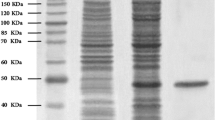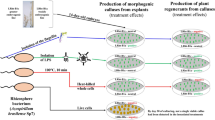Abstract
Several bacterial species can serve as biological ice nuclei. The best characterized of these is Pseudomonas syringae, a widely distributed bacterial epiphyte of plants. These biological ice nuclei find various applications in different fields, but an optimized production method was required in order to obtain the highly active cells which may be exploited as ice nucleators. The results presented here show that P. syringae cells reduce supercooling of liquid or solid media and enhance ice crystal formation at sub-zero temperatures, thus leading to a remarkable control of the crystallization phenomenon and a potential for energy savings. Our discussion focuses on recent and future applications of these ice nucleators in freezing operations, spray-ice technology and biotechnological processes.
Similar content being viewed by others
Author information
Authors and Affiliations
Additional information
Received: 21 December 1999 / Received revision: 29 February 2000 / Accepted: 6 March 2000
Rights and permissions
About this article
Cite this article
Cochet, N., Widehem, P. Ice crystallization by Pseudomonas syringae . Appl Microbiol Biotechnol 54, 153–161 (2000). https://doi.org/10.1007/s002530000377
Issue Date:
DOI: https://doi.org/10.1007/s002530000377




